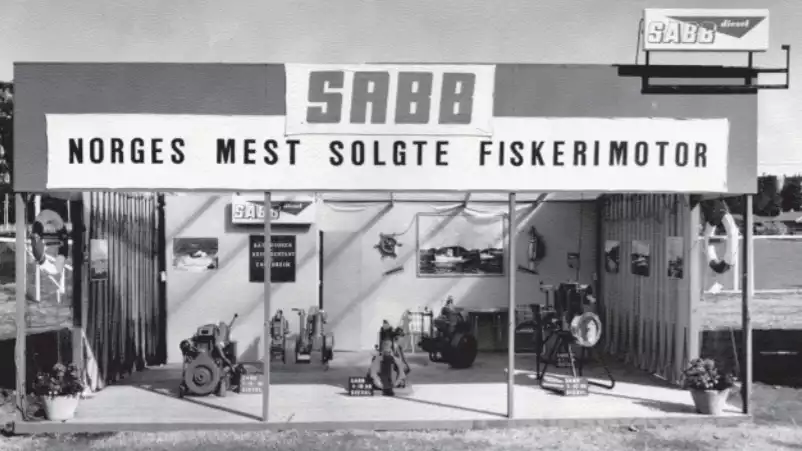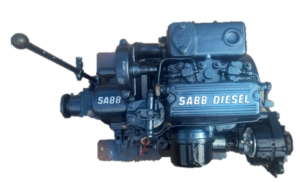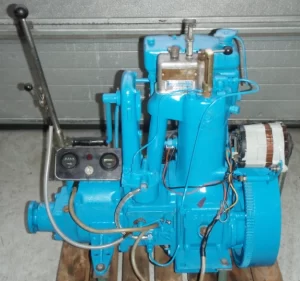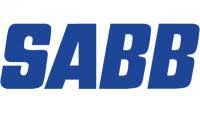
Not to be confused with that other Scandinavian company with a similar sounding name, Saab’s Sabb’s main market is marine diesel engines for lifeboats, fishing vessels, fish farming, canal boats, work boats and pleasure craft. They are the world’s largest supplier of lifeboat engines offering lightweight, safe and reliable propulsion units that operate under extreme conditions.
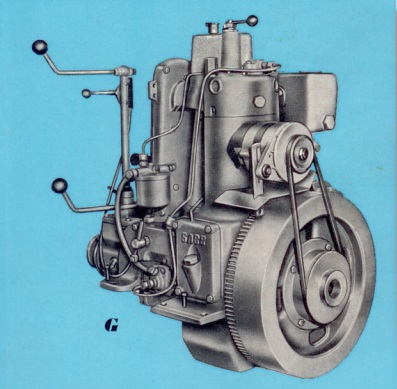
History of SABB Marine Diesel Engines
In 1925 there were some 53 manufacturers of small semi-diesel engines along the Norwegian coast, providing power units for the fishing fleet which was at the time was still largely working with sail and oars. Two brothers, Alf and Håkon Söyland, started one such firm near Bergen, and designed a 3HP hot-bulb engine which was produced by a staff of three in an old waterside shed.
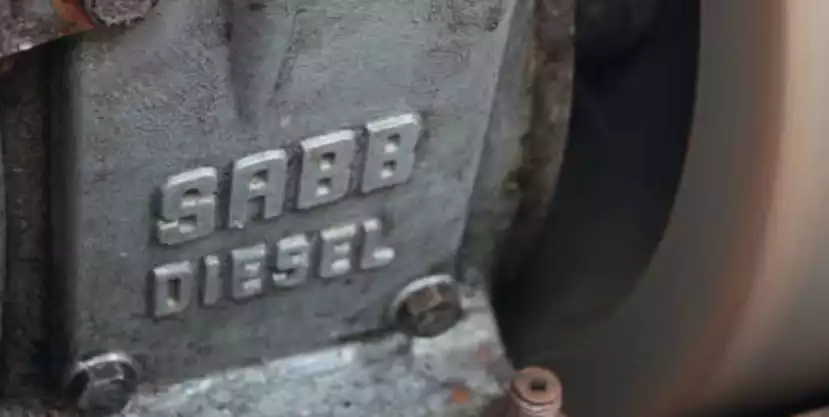
Three years later, a larger 7HP version came close to ending the enterprise, as several early versions broke their crankshafts. The crank was modified and the engine re-launched under the name Ny-Sabb (New Sabb), the word ‘Sabb’ being a local term for toughness and reliability. The engines found favour with the fisherman, and the firm prospered. Alf’s two sons, Gunnar and Koll, joined the firm just after the war, followed by Håkon’s sons Jan Anders and Håkon Jr. In 1955 a full diesel, designed by Gunnar, made its debut. It was a long stroke single cylinder water-cooled engine, with huge roller bearings for main and big-end bearings, lubricated by splash from a dipper on the bottom of the connecting rod. Easily started by hand, it incorporated a Bosch indirect fuel injection system, and could be run for days on end at a slow tick-over without sooting up. No one at the time imagined that this engine was to prove so popular, and that thousands would be made and sold worldwide. It is still production, virtually unchanged.
At the time of the Jubilee in 1975, Sabb Motor employed 170 and turned out 3,200 engines a year between 8 and 30 HP. With the recession, and arrival of cheap mass-produced high revving engines, the company decided to concentrate on a different market and is now probably the largest supplier of engines for ship’s lifeboats, some being their own 30HP unit (L4 and L4T), whilst larger units are marinized from Iveco Ford, Kubota and other commercial engines. Now managed by Jan Anders and Håkon Söyland Jr., the firm is proud to be the sole survivor of the family owned engine manufacturers in Norway.
Video: Click to watch a video of a 10HP SABB being hand-cranked
SABB Marine Diesel Engines
| Series | Details |
|---|---|
| G | Following a series of semi-diesels, this was the first true diesel, produced from 1955 to 2002 a run of some 24,500 engines. They were often just called the Sabb 10hp. Splash lubricated with huge roller big-end bearing running on crankpin and taper roller mains. Two lead-filled balance weights in cover behind flywheel reduce primary out of balance forces. Pinion on crankshaft runs in female gear with twice the number of teeth, so entire rear bit runs at half engine speed. In effect, it drives off the camshaft. Massive flywheel at front just fits on taper, with one large retaining nut. No lubrication to top end apart from that provided by the oil can. They could be, and often were, hand cranked. |
| H | Developed from the G, introduced to provide a lower engine more suitable for yachts. Shorter stroke, and with small vane-type oil pump driven off single balance weight in crankcase. Shell mains, and big end was solid thick shell type early, then changed to thin wall. Lighter flywheel bolted onto front of crankshaft with four bolts. Usually fitted with a Bosch dynastart & twin V belts running in grooves machined on outside of the flywheel. When dynastart became unobtainable, big re-design to allow starter motor and alternator set-up, but 3 years later (1980) production stopped. |
| GA | Air cooled version of the G, introduced primarily for use in ship’s lifeboats (this started Sabb’s knowledge of this market leading them to virtually writing off the leisure boat market after the arrival of Yanmar, and concentrating on lifeboats). Crank as G, but finned barrel, alloy direct injection head (others indirect), flywheel incorporating fan, and optional mega bilge pump! Originally rated at 12HP, more power was needed to pass some regulation, so in 1978 bore increased and different pump and injector raised this to 14HP. Cancelled contract in the 70’s led to several being sold off cheap to private owners. |
| 2H | In terms of capacity, 2 cylinders the size of the H. Rated at 18HP, of one up, one down design, unlike the Bukh similar-looking engine. The oddity in the range, being Sabb’s attempt at a light weight engine. Unfortunately the designer died during the development, leading to many modifications and alterations during the production run. Fitted as standard unit in many yachts, and due to identical mounting dimension, the 2H replaced single cylinder engines in countless boats. |
| 2G | Twin cylinder version of the G. Huge, heavy and slow, bit like an old Lister. Tunnel bored crankcase houses 3 bearing crank, flywheel on front taper as the G. Main and big ends all really thick solid bearings, lubricated by gear oil pump. Indirect injection, one pump per cylinder. Vast range of gearboxes and variable pitch boxes fitted, with 2 to 1, 1½ to 1 and direct drive options. |
| 2J | A 3-cylinder version, to be called the 3G was never completed. Instead to get more power for the lifeboat market, the 2G was over bored, fitted with direct injection, and became the 2J. They look identical, except the 2G has one rocker cover over both pots, and the 2J has one on each. These engines were fitted to many lifeboats until the marinised engines took over. Production stopped in 1983. |
Pick your engine…

